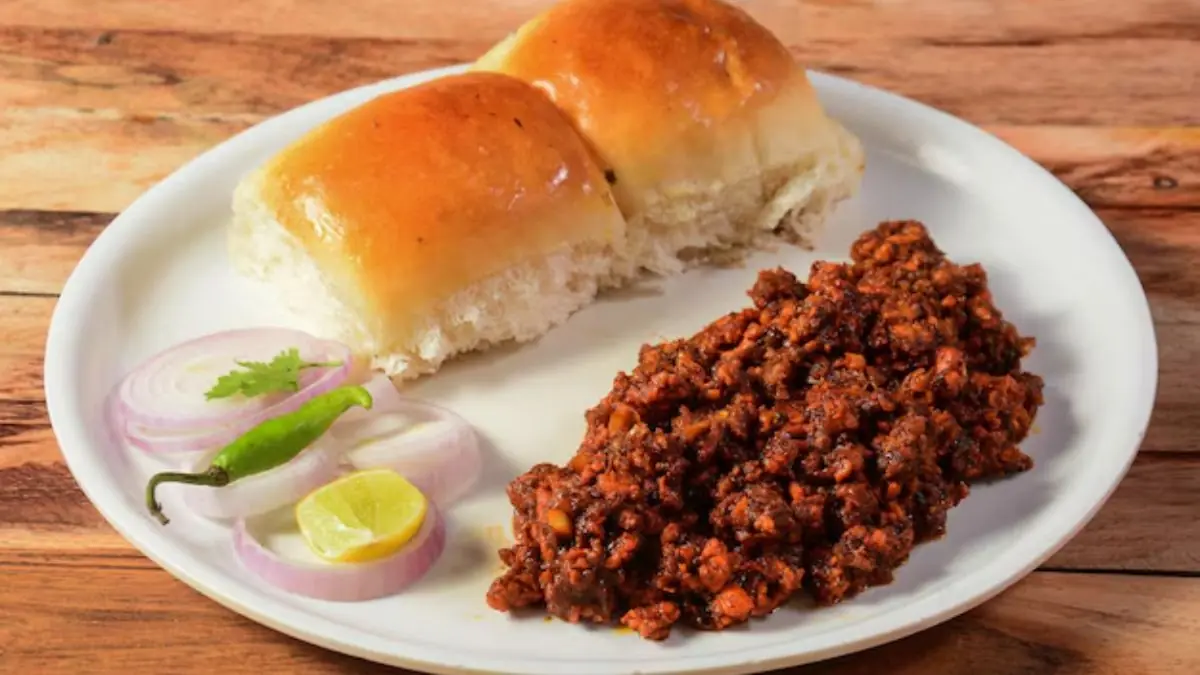Mutton Keema Pav is among the most sought-after street foods and a staple available in Parsi and Irani cafes, narrating a fascinating tale of migration, fusion of cuisines, and the evolution of regional cuisine. If you trace its origins, you will land in the opulent royal courts of the Mughal Empire, where ‘keema’ (minced meat) was an ingredient used to yield rich delicacies for emperors. The word, derived from the Turkish word kiyma, meaning ‘minced’, speaks about its Central Asian and Persian roots, which were brought to the Indian subcontinent by the Mughals.
While keema, in various forms, travelled across North India and Hyderabad, but when it reached the bustling metropolis of Mumbai, it found its ideal companion: the pav, a soft, fluffy bread roll, which has its own unique history.
The pav was introduced to Indians by the Portuguese in Goa, who missed the taste of their home. Goan bakers ingeniously used toddy (a local fermented sap) to leaven the dough, and this spongy
Mutton Keema Pav is among the most sought-after street foods and a staple available in Parsi and Irani cafes, narrating a fascinating tale of migration, fusion of cuisines, and the evolution of regional cuisine. If you trace its origins, you will land in the opulent royal courts of the Mughal Empire, where ‘keema’ (minced meat) was an ingredient used to yield rich delicacies for emperors. The word, derived from the Turkish word kiyma, meaning ‘minced’, speaks about its Central Asian and Persian roots, which were brought to the Indian subcontinent by the Mughals.
While keema, in various forms, travelled across North India and Hyderabad, but when it reached the bustling metropolis of Mumbai, it found its ideal companion: the pav, a soft, fluffy bread roll, which has its own unique history.
The pav was introduced to Indians by the Portuguese in Goa, who missed the taste of their home. Goan bakers ingeniously used toddy (a local fermented sap) to leaven the dough, and this spongy bread eventually landed in Mumbai. It quickly became the bread of the common man. Why? Because it was a cheap and versatile accompaniment, not to mention fulfilling. It soon became an indispensable part of the street foodscape and signed an unbreakable treaty with dishes like vada pav and misal pav.
The fusion of Mughlai keema with Portuguese-influenced pav birthed a meal in Mumbai that transcended class and culture. It soon became an important part of breakfast and lunch scenes, and started featuring on the menus of the city’s famous Irani cafes. In Mumbai, the combination of Portuguese-influenced pav and Mughlai keema created a cuisine that cut across social class and cultural boundaries.
It quickly gained popularity as a breakfast or midday meal and was served at the city’s well-known Irani cafes. The dish is an essential component of the financial capital of India’s culinary scene. Beyond its culinary adventure, keema pav is a well-balanced and useful meal, particularly when combined with whole wheat pav. The bread transforms the dish from a simple treat into a high-protein meal. Made with minced mutton, tomatoes, onions, and a complex blend of spices, the keema is a rich, aromatic curry that is a great source of high-quality protein that can help build muscle. The wheat pav provides complex carbohydrates and adds dietary fibre, complex carbohydrates for sustained energy, and B vitamins. It fuels the body with a steady flow of energy, which is what you need when you are living in the city that never sleeps.


